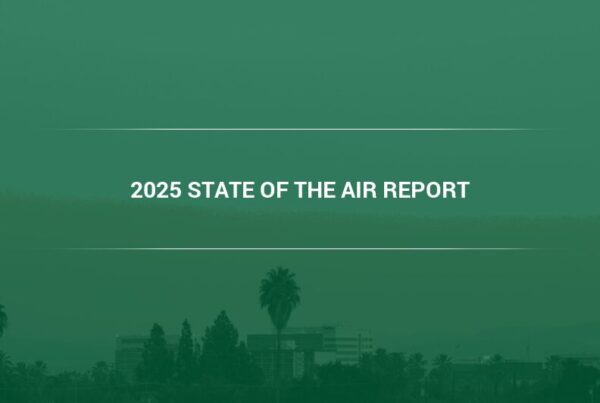The term smog was originally coined as a portmanteau of smoke and fog to describe the thick haze of pollutants which hung over London in the 1950s. Smog refers mainly to a mixture of pollutants today, most of which is ground-level ozone. The effects of smog have been studied and it can easily cause a variety of health problems from long-term exposure, including death. What origins of smog, and how can people protect themselves from it?
Download: Ozone Rating Guide by Camfil Air Filters
The Cause of Smog
Smog refers to a mixture of various emissions which gather together due to certain climate conditions. The cause of smog is varied, with much of it coming from pollutants from industry, emissions from fossil fuel powered vehicles, open cooking, and burning, and incinerators often contribute to smog problems.
“Ozone is one of the primary contributors to smog, and while in the upper atmosphere it is a beneficial chemical which shields us from solar radiation, at ground level it is a pollutant that can harm people’s health,” says Camfil’s Charles Seyffer, Manager of Marketing & Technical Materials.
“Other contributors to smog include nitrogen oxides, particulate matter, and the volatile organic compounds.” (1)
The smog which forms in the summer is known as photochemical smog and it’s created when hydrocarbons and nitrogen oxides are hit by sunlight, forming the smog in the atmosphere. Heavy traffic, high temperatures, high levels of sunshine, and calm winds often cause smog to accumulate in an area. Low wind speeds cause smog pollutants to accumulate since they are not dispersed, and geographical elements like mountains can also cause smog to accumulate in low lying areas.
The EPA estimates that over 50% of nitrous oxides that contribute to smog is released by the transportation sector, as well as over 30% of all volatile organic compounds, and over 20% of particulate emissions. (2)
The Health Impacts of Smog
The health impacts of smog range anywhere from minor irritants up to potentially lethal diseases like lung cancer. Smog is a well-established eye irritant, and it also impacts the lungs. Smog causes inflammation in lung tissue, which causes chest pains and difficulty breathing. Long-term exposure to smog can create more severe effects such as increasing risk of developing colds and pneumonia. (3)
“Smog also exacerbates threats of asthma attacks in people who already suffer from the condition. Premature deaths due to the development of lung cancer or other severe respiratory or cardiovascular diseases are another established impact of high smog levels,” says Seyffer. “The elderly and children are at especially high risk of this harmful smog. Ozone exposure can also cause chronic obstructive pulmonary disease, or COPD.” (4)
A recent study linked air pollution in China, particularly the heavy smog that shrouds Beijing and other large cities in China, to an estimated 1.6 million deaths every year. This translates to about 4400 people a day who die prematurely due to the effects of smog. (5)
Protecting Yourself From the Effects of Smog
The EPA notes that damage to the lungs from ozone exposure can continue even after symptoms have abated. Because it’s easy to overlook the effects of smog, protecting yourself from the effects of smog is extremely important.
“It’s important to stay up to date on smog and weather predictions, so you should check your local daily air quality index. If air quality levels are low and the air is full of pollutants, you should avoid those affected areas,” states Seyffer. “If you’re going to be outdoors, stay away from areas that are large sources of pollution like highways and factories, and if possible limit your outdoor activity to early morning or after dusk when pollutant levels are lowest.” (6)
If it is too difficult to avoid smog-filled areas, use effective face protection. The masks created for industrial use are the most effective way to protect yourself, as dust masks and paper masks often only trap large particles and let small harmful particles slip through.
The best way to protect yourself is to stay indoors, within a building that has effective air filtration. This will reduce the levels of pollutants you are exposed to the most, and is the best option when pollutant levels are at their highest and most dangerous. The EPA suggests that people remain indoors with closed windows and use air conditioners or air purifiers with effective filters.
For areas with high levels of ozone special types of air filters are available. Ozone is a gas so it is not commonly removed by normal HVAC air filtration. There are panel and other high efficiency hybrid filters that are available to address both particulate pollution and the gaseous ozone component of smog. Consult your local air quality professional for guidance in this area.
The effects of smog can devastate your health and your family’s health, so be aware of the impacts of smog and the best tactics for protecting yourself.
Camfil offers helpful information on the effects of smog and how you can protect yourself. Visit Camfil website today for information and high-quality filters/purifiers to safeguard your health.
Lynne Laake
Camfil USA Air Filters
T: 888.599.6620,
E: Lynne.Laake@camfil.com
F: Friend Camfil USA on Facebook
T: Follow Camfil USA on Twitter
Y: Watch Camfil Videos on YouTube
Sources:
http://www.healthline.com/health/dangers-smog-what-you-need-know-about-air-pollution#overview1
https://www.epa.gov/air-pollution-transportation/smog-soot-and-local-air-pollution
http://www.conserve-energy-future.com/smogpollution.php
https://www.epa.gov/ozone-pollution/health-effects-ozone-pollution



